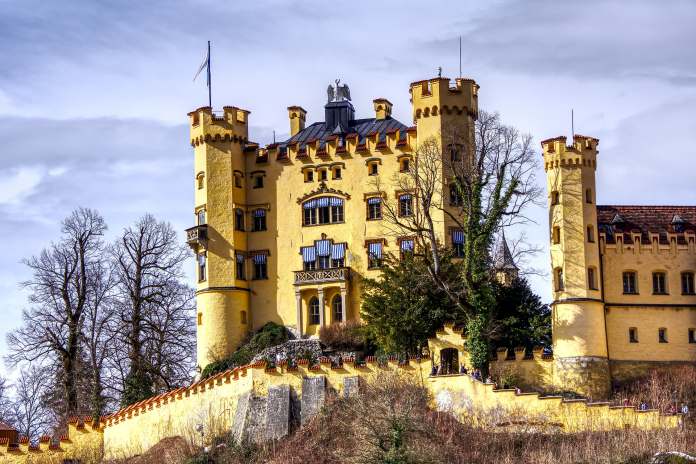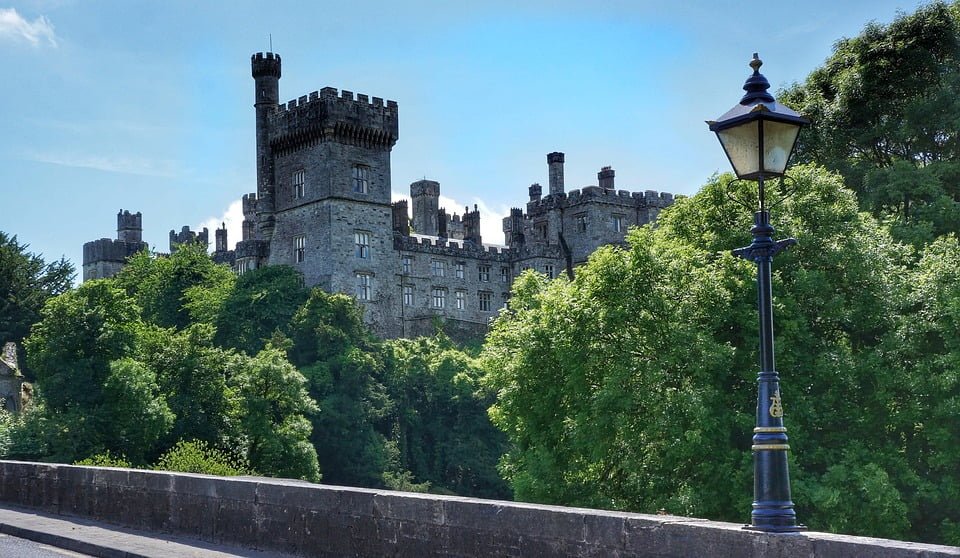Hohenschwangau Castle is a 19th-century architectural masterpiece situated in Bavaria, Germany. It’s a few hundred meters away from Neuschwanstein, another world-famous castle, and is quite popular for its heavenly views and homely atmosphere. The name of the Hohenschwangau Castle comes from a German word that translates to “High Swan Country” and the oldest record of the traces of its origins back to the 12th century. Let’s take a look at everything you need to know about how this castle came to be and what condition it’s in now.
Table of Contents
The walls of the beautiful fairytale Hohenschwangau castle depict the story of German and Bavarian history.
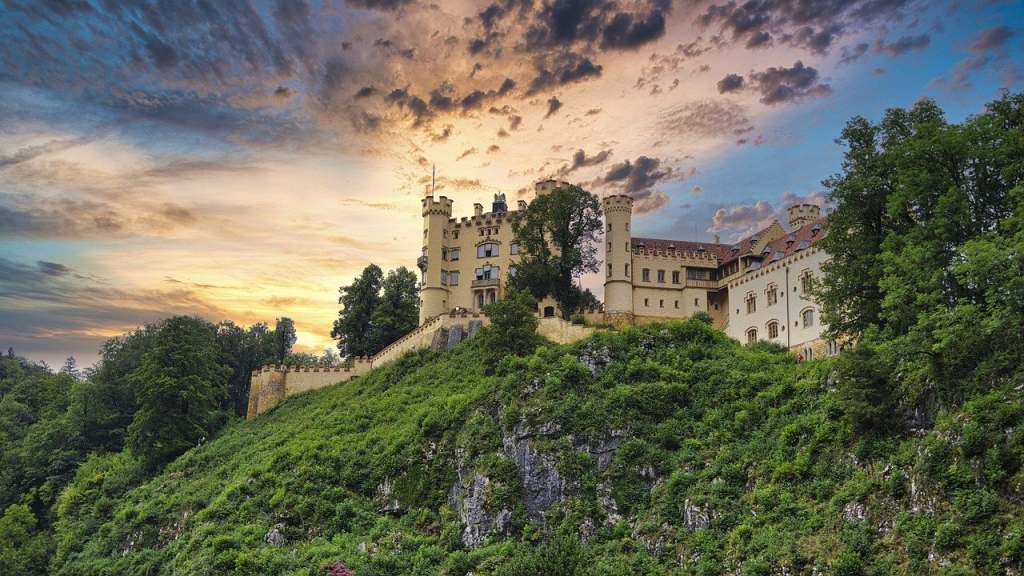
Frequently Asked Questions
When was Hohenschwangau Castle Built? Who Build It?
The majority of what you can see of the Hohenschwangau Castle now was constructed in the 1830s by Maximillian II, father of the Mad King.
Maximillian II was so taken by the scenery that he decided to reconstruct the castle. He wanted the new construction to emulate the 19th-century romantic architecture fad.
When is The Best Time to Visit the Castle?
Autumn (between September to October) is the best season to visit the castle. The weather in winter is extremely cold, so most of the services are likely to be shut down due to snow or other weather conditions. During the summer the weather is perfect, but the castle can be crowded due to visiting traffic.
What Other Monuments are Located Nearby?
There are many other famous sites near the Hohenschwangau Castle that include the Neuschwanstein Castle, the Weis Church, the Hohen Schloss, and the Fussen Heritage Museum/Benedictine Monastery of St. Mang.
FOR HISTORY | BEAUTIFUL IMAGES | INTERESTING FACTS | TRAVEL TIPS
Early History
Under the Schwangau Knight for 400 Years
The castle was constructed in the 12th century by the Knights of Schwangau, vassals of the Guelphs, who lived there for around 4 centuries. Unfortunately, it was destroyed during several wars that followed. In the 16th century, the last surviving knight passed away. Hence the Hohenschwangau Castle becoming an abandoned fortress.
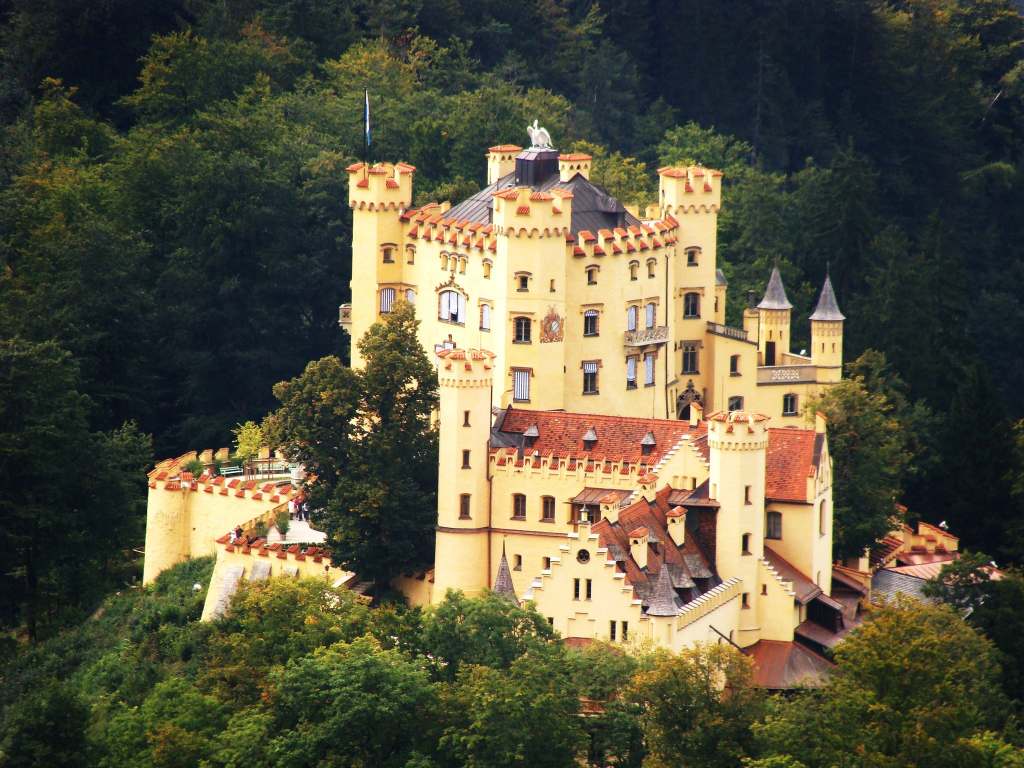
Abandoned Fortress in the 16th Century (15th Century Onwards)
The counsellor Johan von Paumgartner Zu Paumgarten bought the castle in 1535 after the knights of Schwangau were toppled. He hired the famous artist and architect Lucio di Spazii to rebuild the fortification in the years spanning from 1538-47, and was the one who christened it “Hohenschwangau.”. The counselor lived there for only a short time. Unfortunately, after 300 years the castle fell to ruins.
Era of the Napoleonic Wars (1800-1809)
Hohenschwangau castle’s condition worsened when the French army bombarded it during the Napoleonic wars (1800-1809). A local resident bought the castle in 1820 for 200 guilders in order to demolish it. But it was re-purchased by the Prince Ludwig von Oettingen-Wallerstan for 225 guilders in order to avoid the demolition. However, he sold it again when he lost his position as the head of the family.
From Ruins to a Castle
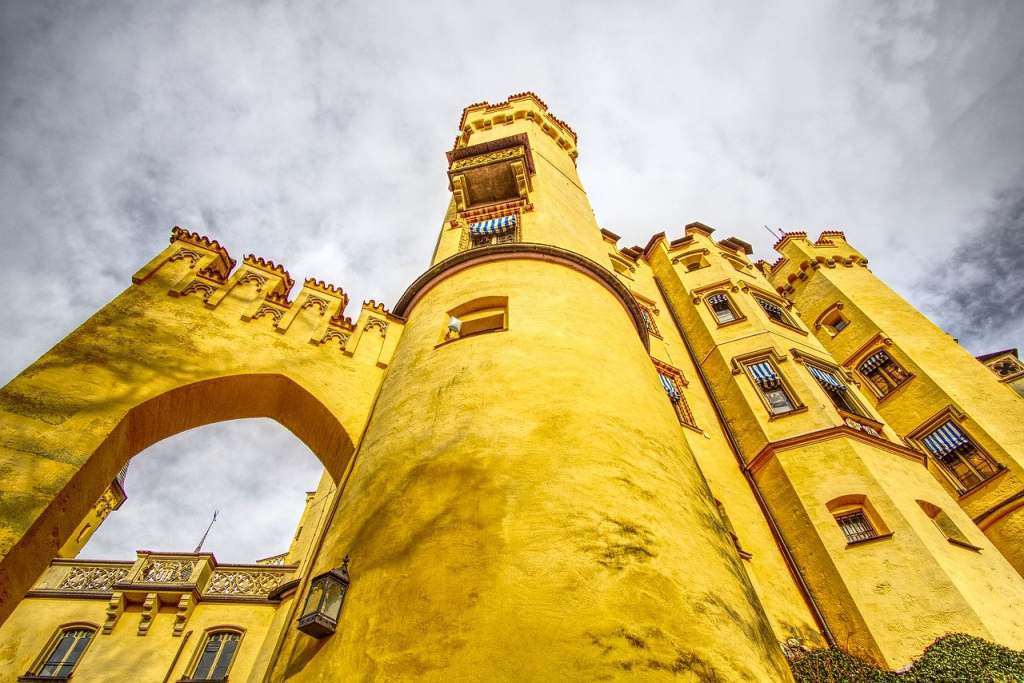
In 1832, Maximillian II, father of the Mad King fell in love with the location of the land and purchased the ruinous Hohenschwangau Castle. He completely remodeled it in the vein of 19th-century romantic architecture and made it the wonder that we admire today. During the revamp, it was adorned with frescoes, portraying the Holy Grail, Lohengrin, and Tannhauser in Neo-Gothic Style. Also, every room has a different theme, which enhanced and added to the castle’s beauty.
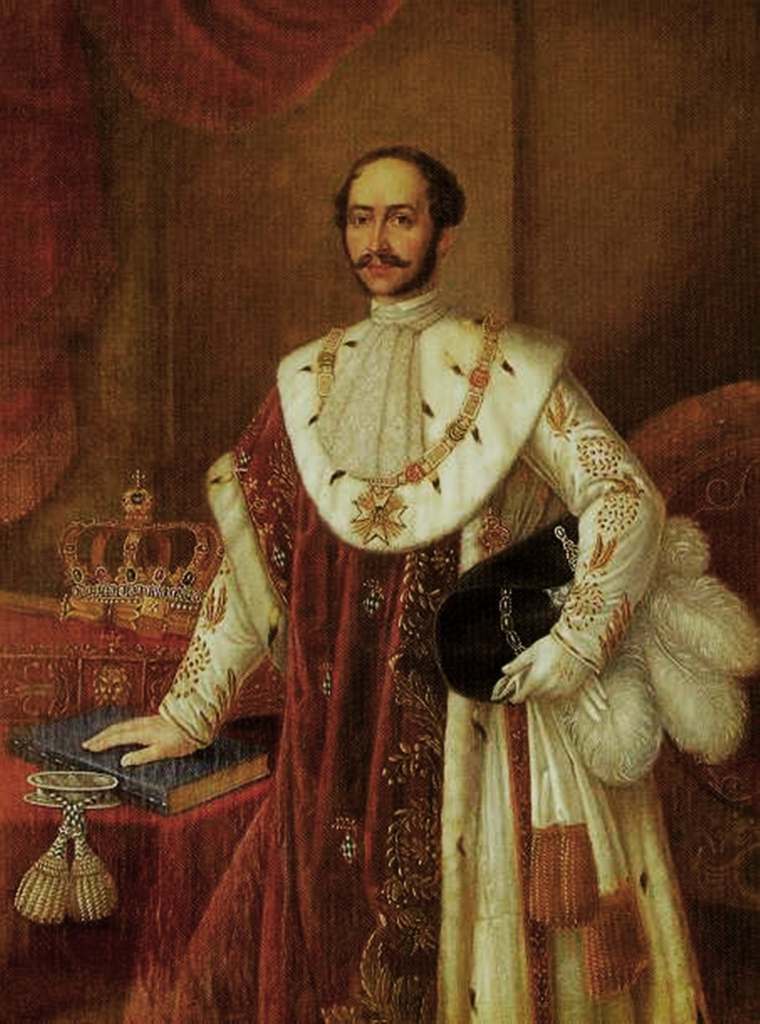
Hohenschwangau Castle served as the childhood home to King Ludwig II and Otto I, and as a hunting retreat for the royal family during summers. Many known artists were hired for this project, including Domini Quagilo, Joseph Daniel Ohlmuller, and Georg Friedrich Ziebland. Although the majority of work was done under the supervision of Domino Quagilo, the rest were appointed after his death. Hohenschwangau’s construction was completed in 10 years.
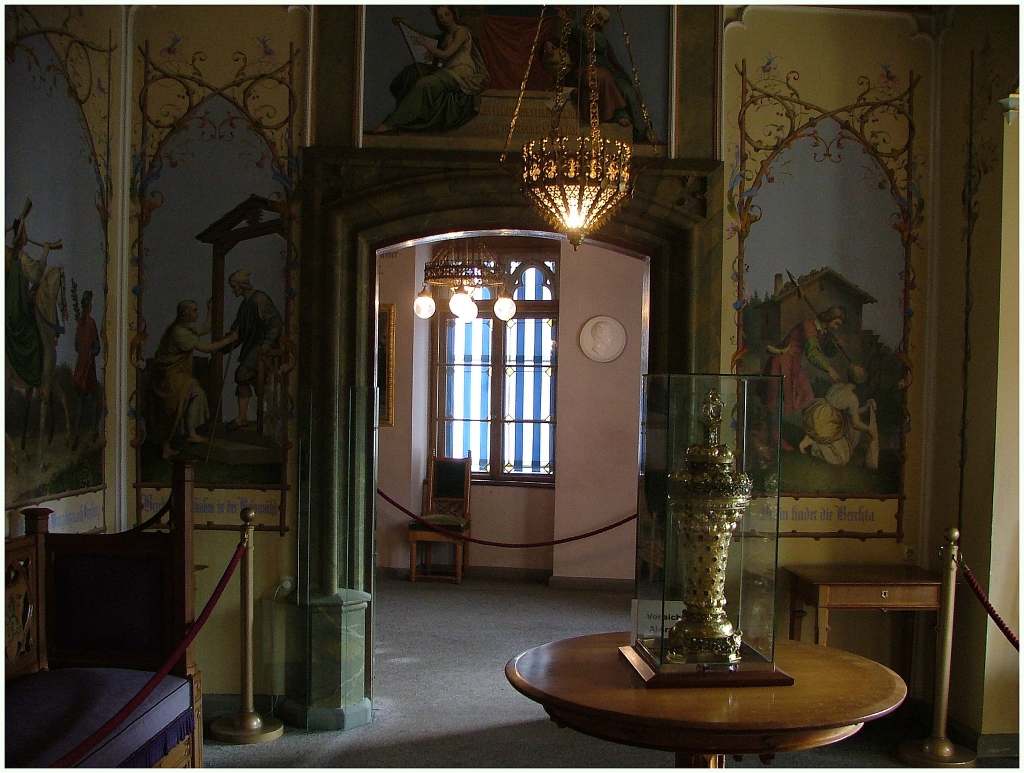
King Maximilian died in 1864, and Ludwig II shifted into the main building. He stayed there until the completion of his new home, the Linderhof Palace. Since 1928, the Hohenschwangau Castle has been owned by the Wittlebasch Family.
Revisit More Historic Places Below or Read Further
Current Times
The castle has been open to visitors since 1912. Over the years, it’s become quite a tourist attraction and more than 300,000 people visit it yearly. You have to book a tour guide in order to visit the castle, as free explorations are not allowed. Read further to find out more information on travel tips, ticket prices, and opening hours.
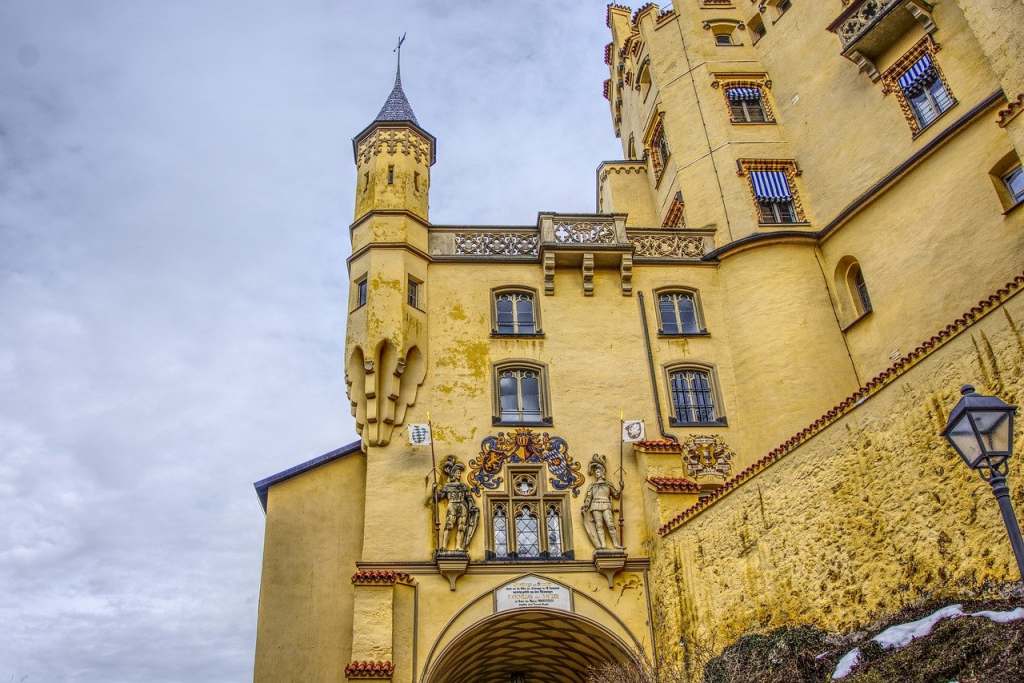
Interesting Hohenschwangau Castle Facts
- The walls of the beautiful fairytale Hohenschwangau castle depict the story of German and Bavarian history.
- The banquet hall, also known as “the Hall of the Heroes,” is the largest space in Hohenschwangau Castle. It is so wide that it spans the entire width of the castle. It is embellished with paintings depicting various scenes from the Wilkins Saga, as well as its hero, Dietrich von Bern.
- Maximilian visited Turkey in 1833 and got so inspired by its architecture and culture that he adorned the Queen’s room in Turkish style.
- The eye-catching square piano engraved in a maple tree was used by Wagner for many private concerts for a single audience member; Ludwig II.
- Neither WWI or WWII could cause any damage to the castle.
- At Hohenschwangau Castle, only guided tours are permitted, and photography is not allowed inside the castle.
Visiting Hohenschwangau Castle – Tips and Tricks
Hohenschwangau Castle is an amazing place to visit and has a lot of visual and historical culture to offer. If this castle seems like an attractive destination, then here are some general tips you can use to plan your visit:
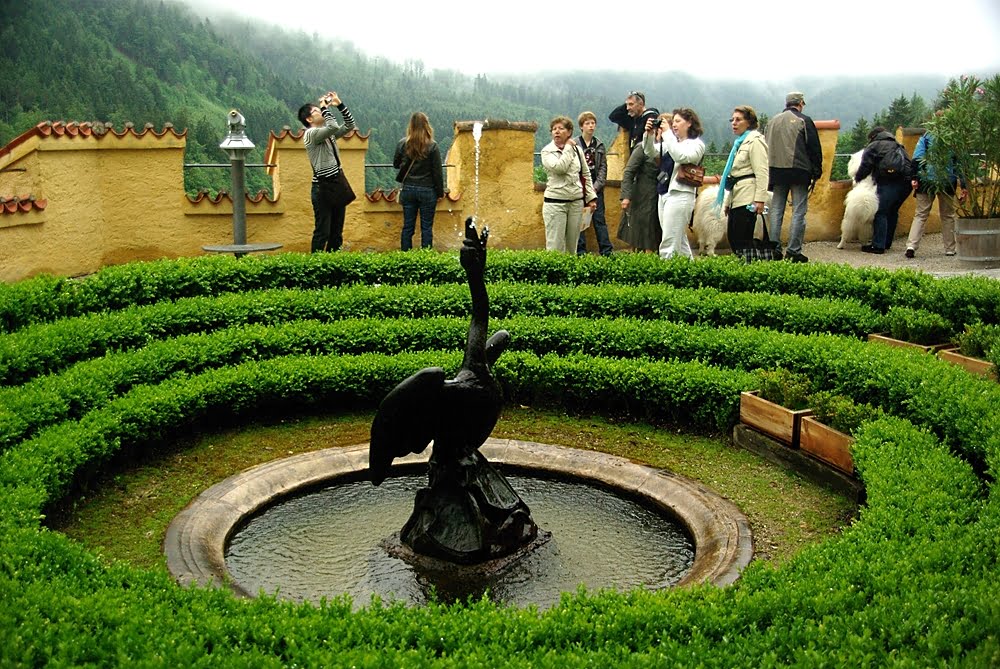
How to get to Hohenschwangau Castle?
You need to get to the city of Füssen in order to visit Hohenschwangau Castle. In order to get to Füssen, you can travel by car, bus, or train.
The cost of traveling by train depends on which city you’re taking it from. From Munich, it can cost you about €17.50 ($22 USD). When you get off at the station, the No. 38 bus is waiting in the lot. The Hohenschwangau castle is clearly labeled on the bus. Within 10 minutes you will be at the entrance, where you can collect your tickets.
A horse carriage ride is also available for the Hohenschwangau castle if you do not want to take a walk, but it costs an additional €4.50 ($5.48 USD) for uphill and €2.50 ($3.05 USD) downhill travel and you need to pay the amount directly to the driver. This service is not available during winters.
Ticket Prices, Visiting Hours & Travel Tips
Information was checked & updated on October 4, 2023.
The castle is open daily, except December 24 and January 1. Opening hours of the castle are 09:00 a.m. to 06:00 p.m. Ticket house opens and closes one hour before the castle is closed off to the public.
The ticket costs €21 ($22USD) along with €2.50 ($4 USD) service fee per person. For children and teens from 7 – 17 years old ticket costs €11 ($12 USD), and children under 7 who are accompanied by their parents and the companions of disabled people are only charged with the service fee. Reduced tickets (€18 {$19 USD} along with €2.50 {$4 USD}) are available for students and senior citizens. A combined ticket that costs €25 ($31 USD) is also available which allows access to both Hohenschwangau and Neuschwanstein Castle.
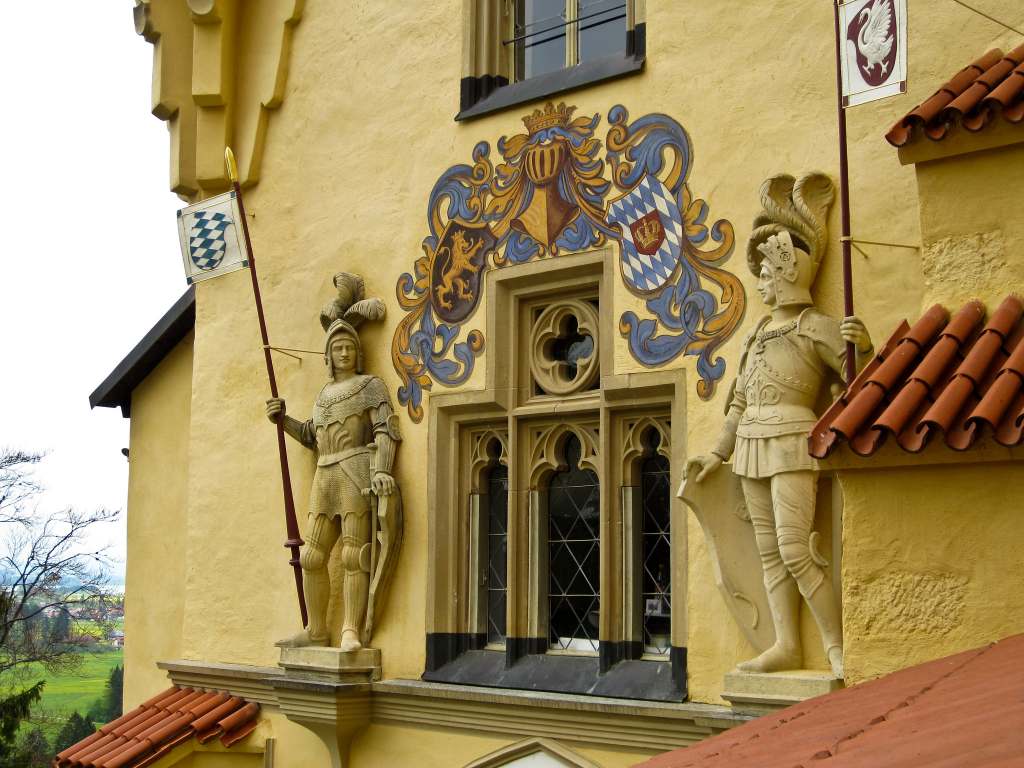
How Long Will It Take to Tour Around?
The castle can only be seen through guided tours, and the whole affair takes approximately 35 minutes. These tours are available in the English and German languages, while audio guides are also available in Italian, Chinese, Spanish, French, Russian, Polish, Japanese, Korean, and Portuguese.
Up to Date Information
For up to date ticket prices and visiting hours visit the official website: https://www.hohenschwangau.de/en
Some words of advice and tips:
- Collect the tickets at least one hour prior to your tour.
- There is no elevator in the castle, therefore, you will have to take almost 90 steps to the second floor. Try to wear comfortable shoes to enjoy your visit.
- The best way to avoid the crowd and enjoy your trip is to go early in the morning.
- Try to schedule your visit during good weather. And if you are visiting during peak season, book your tickets in advance.
- Don’t forget to spend some time walking around Mary’s Bridge.

